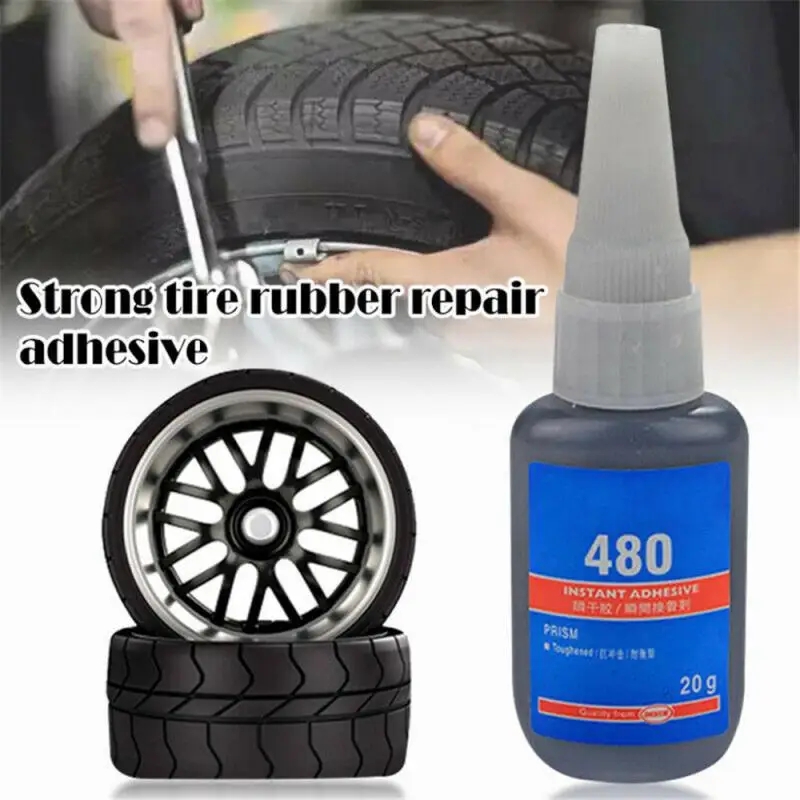One of the problems you can encounter when traveling by car is a punctured tire. Using a patch is a fairly common option to work around this issue.
Yet, if the hole is in a position like a tire wall, the problem becomes much more complicated because it is likely that the defensive position will not be patched.
So, how close to the sidewall can a tire be patched? A distance of 6 mm or more from the tire shoulder is required to fit a patch. In other words, if a crack is closer than 6mm, there’s almost nothing you can do about it!
Tire Sidewall OverviewFirst, let’s learn about sidewalls and how to identify them on your tires.
The wall is the rubber part from the outer edge of the rim to the road surface. This part also has the largest area, is the most flexible, and continuously deforms under loads when moving.
How Close To Sidewall Can A Tire Be Patched?As you know, the car’s wall is in a particular location, so it is pretty challenging to troubleshoot the hole here.
Manufacturers also recommend that you not choose the patch option if the spot is on the side of the vehicle or too close to this position. Then, how close to the sidewall can a tire be patched.
You cannot use the patch if the hole is close to the wheel with a gap of less than 6mm. In addition, you should note that if the hole is more significant than ¼ inch, the patch should not be used. In this case, if the patch is small, it cannot cover the hole, causing the wheel to deflate still when moving.
On the contrary, using a large patch can make the wheel more bulky, difficult to move, and unsafe.
Fix Sidewall DamageOther Related QuestionsTo better understand the problems that occur with the tires and how to overcome them effectively, you can refer to the following information.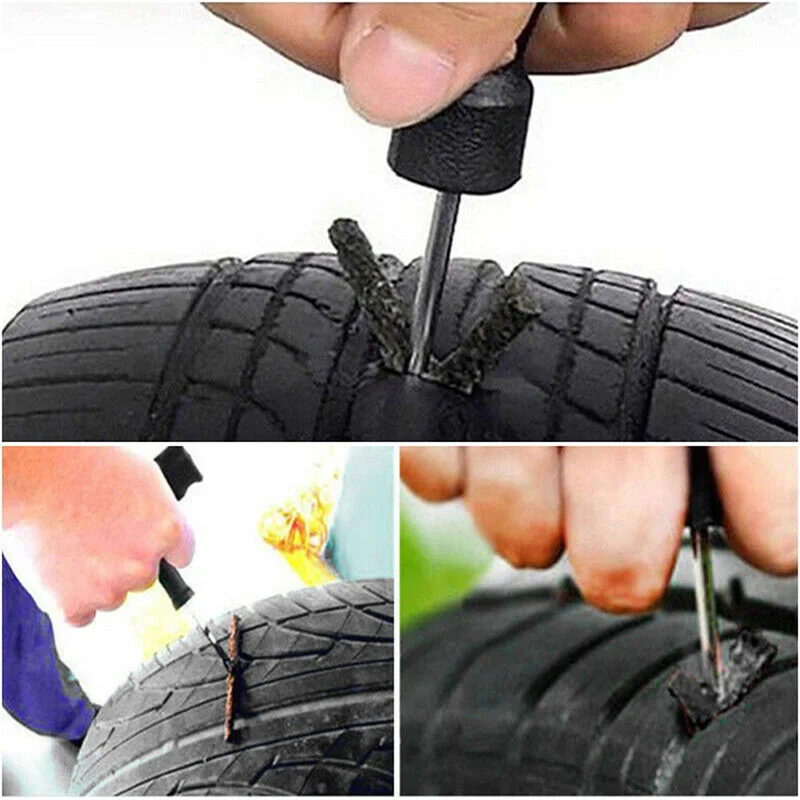
We’ve put together some frequently asked questions that may help answer your questions on this topic.
Plug a flat tire: Is it possible?People are often concerned about whether it is safe to plug or patch a flat tire.
These two options are pretty standard in repairing or overcoming the problem of flat tires caused by rolling nails or other sharp objects.
The manufacturer still recommends that you better replace the tire with a new one when there is a problem because repairing with a plug or patch when a flat one is not a safe solution.
Yet, the cost of new tires is not cheap, and if you have this problem often, it is a big problem. So, many drivers use a plug or patch when a wheel is punctured.
There is a limit to the number of nails or patches on a product. You can use this option to temporarily fix the problem if you find a few small holes. If the wheel has many large holes or previous patches, it is best to replace it with a new one.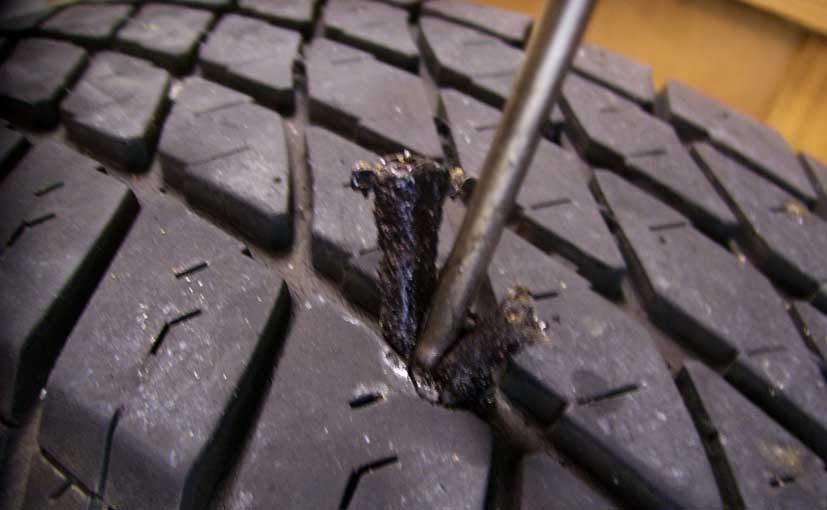
For a detailed guide, check out this video:
How close can a tire patch be to another patch?The gap between patches is also a topic that people are very interested in. When traveling on the road, you may encounter a flat one many times.
As you know, when the tires have had previous patches or punctures in close locations, it is better to replace them. In case
Can you patch a tire on the side of the road?In the case of a puncture on the tire side, the use of stickers is unlikely to have as much effect as you think.
The reason is that its wall adhesion is so thin that relatively few materials can adhere. More specifically, damage to the sidewall will seriously damage the structure of a wheel.
More specifically, damage to the sidewall will seriously damage the structure of a wheel.
The solution to this problem is to insert an extra tube inside the wheel to ensure that you can still turn the whole thing.
How fast can you drive on a patched tire?A patched one will not achieve the same speed and performance as it once was. Therefore, the optimal level you can expect from such a version will not be more than 85 mph. Of course, this is just the limit that many manufacturers recommend, but you should not overdo this limit.
Can you patch a tire with 2 nails in it?The answer is yes! It’s just that the gap between the two punctures is at least 16 inches, and you might seal them with two large patches.
According to many manufacturers, the maximum number of times performed is two times. If more than that, it’s time to get a new one.
ConclusionAs such, a puncture in the side of the vehicle is a unique location where patching is not an optimal solution in this case.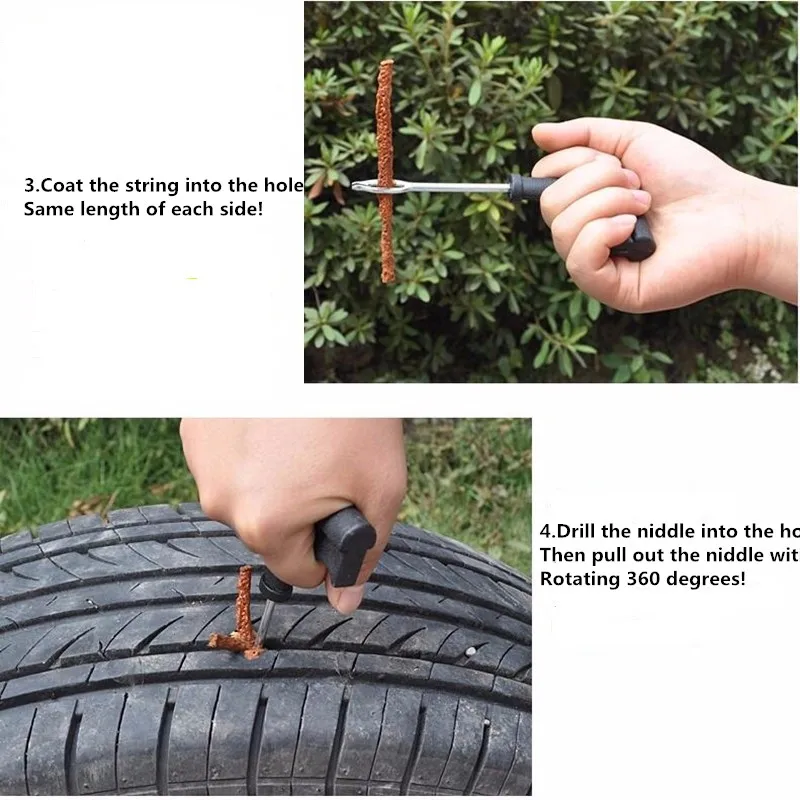 It would help if you changed to a new tire to ensure safety when traveling.
It would help if you changed to a new tire to ensure safety when traveling.
Thank you for following this post!
This post was last updated onBrian England, Tue, Feb 21, 2017
Need an automobile tire repaired? Know what’s acceptable when it comes to repairing your tires. Not all tire punctures are created equal; some can be repaired, and some can’t. Car tires that are improperly repaired can fail and result in an accident. For example, this photo shows an example of a repair that should never have been done.
What is an acceptable tire repair? Here are some guidelines.
1. Only repair punctures that fall within the tread area. First of all, you need to take a look at where the puncture area is. Repairs should be limited to the tread area only.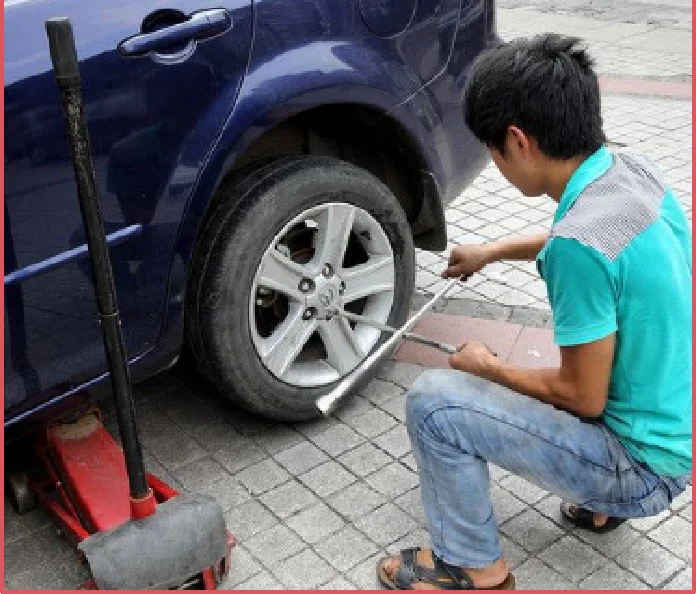 If a repair is beyond the tread area (see the photo below) on the side or along the edge like in the above photo, then the tire should be replaced. Do not make or allow a repair. A reputable tire repair shop would not agree to perform an unsafe repair.
If a repair is beyond the tread area (see the photo below) on the side or along the edge like in the above photo, then the tire should be replaced. Do not make or allow a repair. A reputable tire repair shop would not agree to perform an unsafe repair.
2. Replace tires with punctures greater than 1/4″ in diameter. When it comes to tire punctures, size is important. If the damage resulting from a tire puncture is bigger than 1/4 inch in diameter, it is not safe to complete the repair.
3. Don’t get a tire repaired if the treads are less than 1/16 inch or if it is badly damaged. There’s no sense in repairing a tire that shouldn’t be on the road in the first place. If the treads are less than 1/16 inch, then the tire isn’t safe for road use; it’s time for a replacement. But, there are other times when a replacement is called for. We posted this photo on Facebook recently showing a tire where the tread depth is okay, but the tire is badly damaged.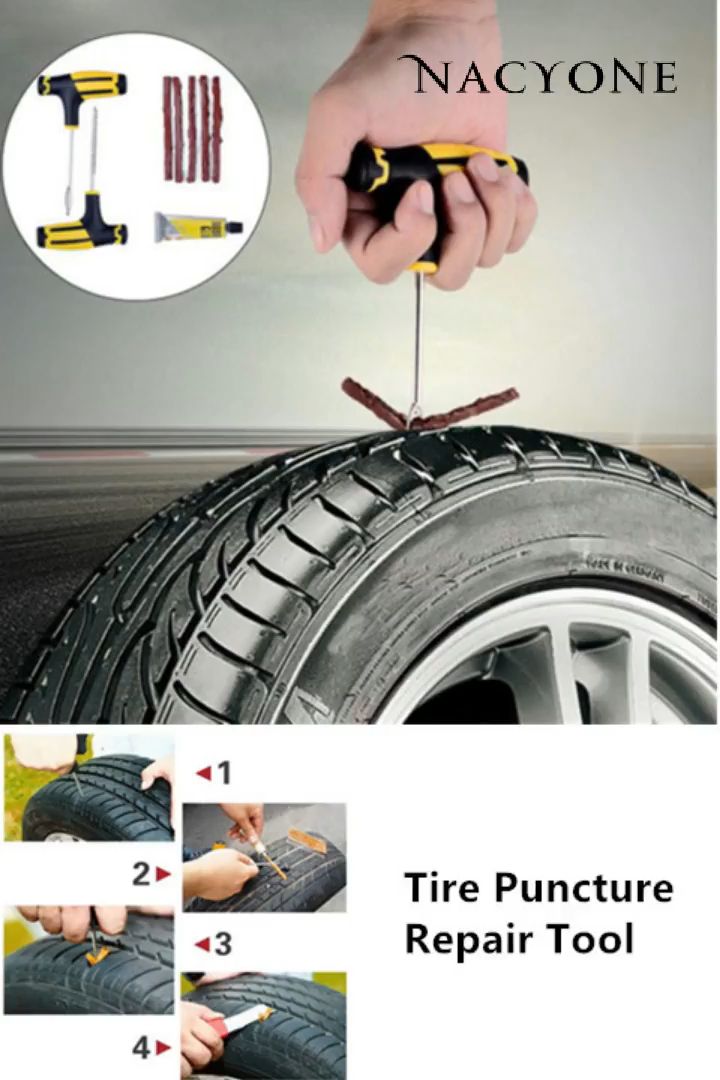 The orange circle shows the small cracks caused by dry rot. The pink circle shows where chunks of the tire tread are missing. If your tire has either one of these problems, replace it versus repairing it.
The orange circle shows the small cracks caused by dry rot. The pink circle shows where chunks of the tire tread are missing. If your tire has either one of these problems, replace it versus repairing it.
4. Make sure that the professional repairing your damaged automobile tire removes the tire from the rim in order to fully inspect the damaged area. The inner liner may have sustained damage that is not visible from the outside.
5. Ensure that your tire is repaired properly with a patch and plug assembly. A plug alone is not an acceptable repair. The photo below shows the type of patch/plug assembly that should be used (on the right) versus one that should not (a plug only on the left).
6. Don’t overlap repairs. If a new puncture is in the same place as an existing repair, then the tire should be replaced. Don’t have it repaired.
Depending on the type of tire you have, there may be some other limitations or restrictions on repairs.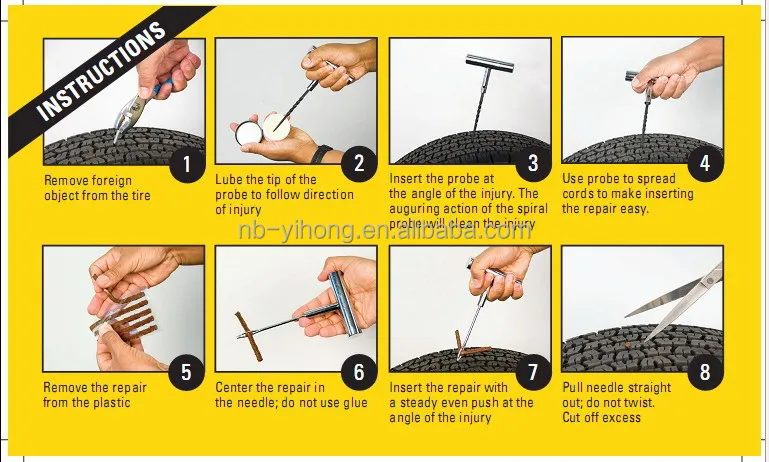 Be sure to take your damaged tire to a professional for repair or replacement. For more information on safely repairing tires, check out the Rubber Manufacturers Association website at www.betiresmart.org or stop by BA Auto Care. We’ll take a look at your tire, and let you know if you have an unsafe repair.
Be sure to take your damaged tire to a professional for repair or replacement. For more information on safely repairing tires, check out the Rubber Manufacturers Association website at www.betiresmart.org or stop by BA Auto Care. We’ll take a look at your tire, and let you know if you have an unsafe repair.
Note: This article, originally published back in 2012, has been updated.
02/22/2018
Despite the objective importance of the spare tire, not all drivers always have it with them. Some do not carry a spare tire out of hope or belief that their tires are invulnerable. Others deliberately take this step, as they stocked up with a special tool in advance, which, if necessary, can eliminate a tire puncture along the way. What else can be used and how to do it right? Let's figure it out. nine0003
Contents of :
Conventionally, all methods for express tire repair can be divided into two categories:
 nine0012
nine0012 Consider ways to restore a damaged tire on the road. The first three methods are temporary. The latter, with the right approach, allows you to completely restore the tire.
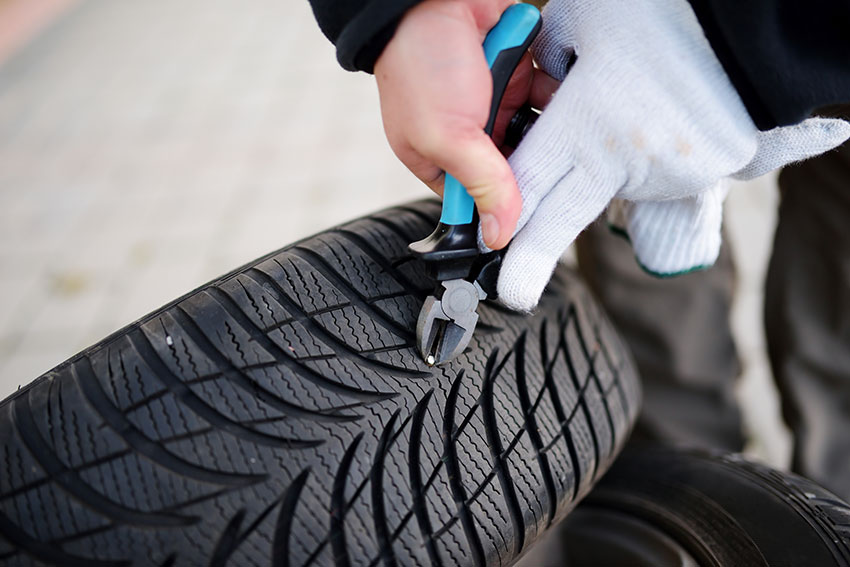 Immediately after use, it is recommended to drive 300-500 m so that the sealant is evenly distributed over the entire surface of the tire and does not cause imbalance. nine0012
Immediately after use, it is recommended to drive 300-500 m so that the sealant is evenly distributed over the entire surface of the tire and does not cause imbalance. nine0012
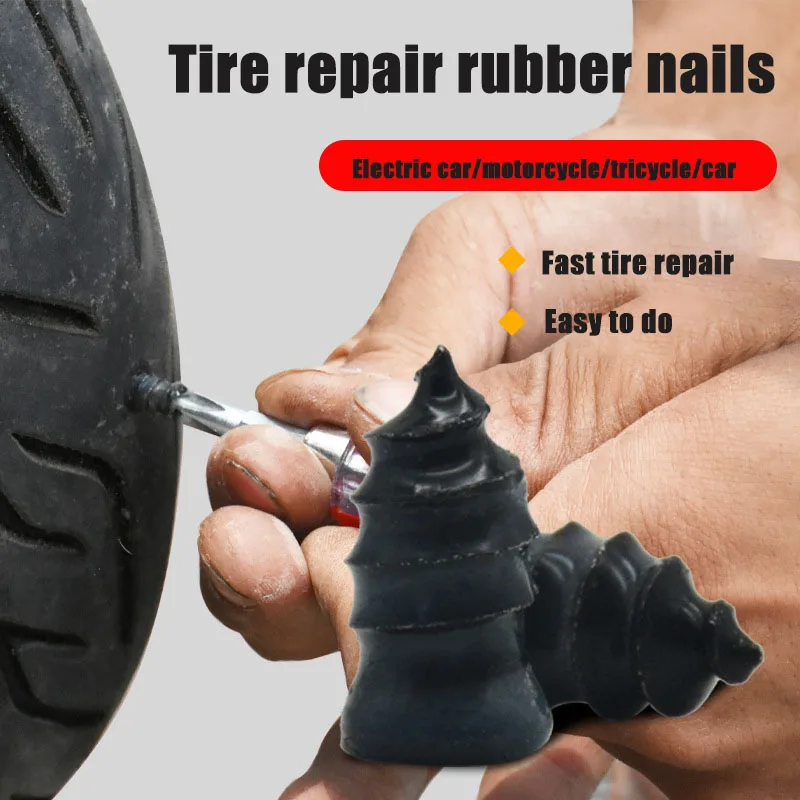
After removing the foreign object, the hole is processed with an awl with abrasive edges: this tool must be inserted into the puncture and cleaned and developed with intensive reciprocating movements several times. Then the raw rubber tow is removed from the package and inserted into the eye of the second awl so that both ends are the same length. The hole in the tire and the raw rubber is treated with an activator. Next, the awl is inserted into the puncture in such a way that small ends of the tourniquet, about a centimeter long, remain outside. After 5 minutes, the excess remaining on the surface is cut off. This method can also successfully eliminate small side cuts. nine0003
There is a technique that allows using wire and several bundles of raw rubber to get rid of even extensive side damage to tires. However, it is quite difficult to implement and not every driver will be able to implement it.
Consider a few well-known tools that are most widely used to repair punctures:
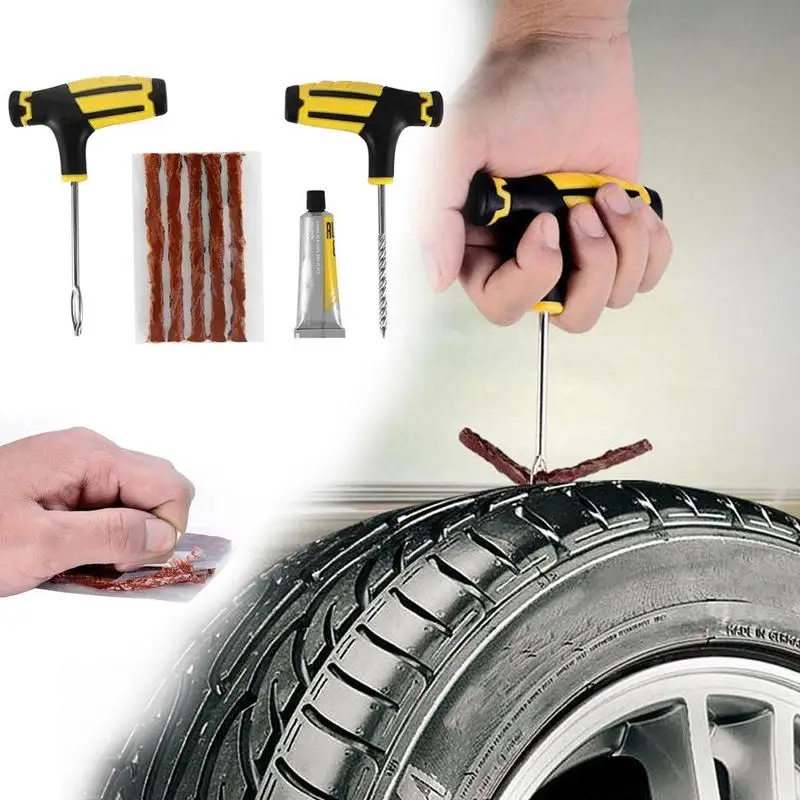 Supplied in a convenient bottle with a hose and a tip for connecting to a tire valve. It works in the same way as most sealants: the container is thoroughly shaken, after that a hose is attached, and the contents from the container are completely pumped into the tire. The maximum diameter of the repaired hole is 4.5 mm. This is almost always enough to repair punctures caused by nails and screws. nine0012
Supplied in a convenient bottle with a hose and a tip for connecting to a tire valve. It works in the same way as most sealants: the container is thoroughly shaken, after that a hose is attached, and the contents from the container are completely pumped into the tire. The maximum diameter of the repaired hole is 4.5 mm. This is almost always enough to repair punctures caused by nails and screws. nine0012
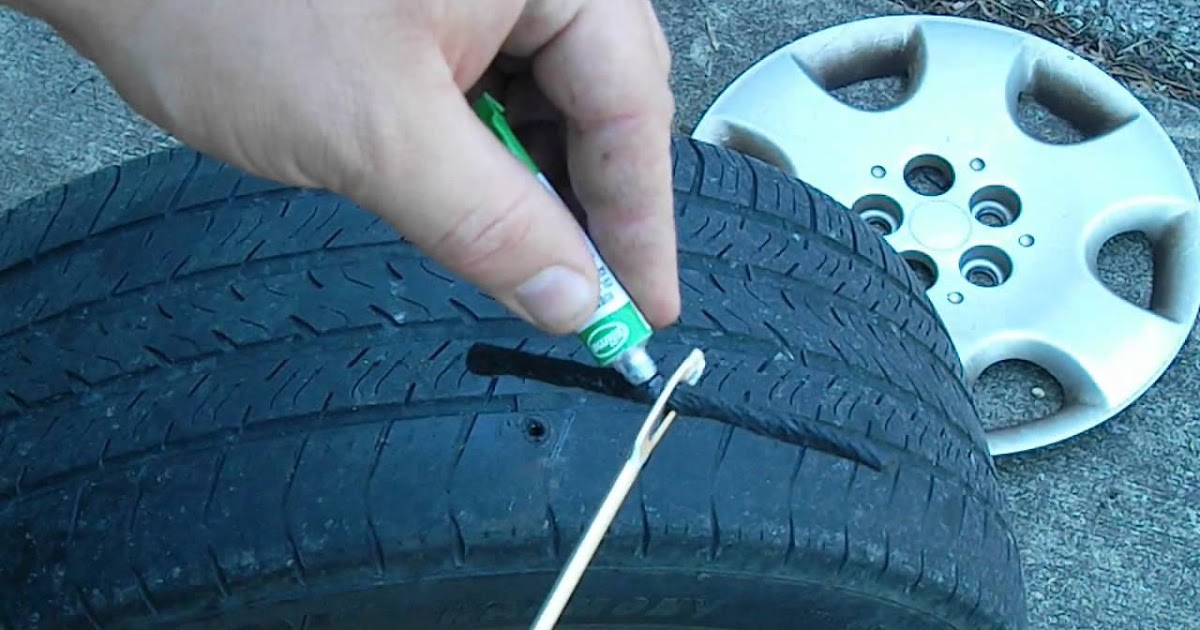 It requires more time and effort to implement than liquid formulations, but when used correctly, it gives a reliable and long-term result. nine0012
It requires more time and effort to implement than liquid formulations, but when used correctly, it gives a reliable and long-term result. nine0012 Our online store offers a wide range of tire repair products. You can order them through the TopDetal.ru website or by calling 8 800 444-75-16.
Also read on our website about the best liquid rubbers.
Back to list
Workshop solutions
Wash area Reception/delivery area Diagnostic area Locksmith area Wheel alignment area Tire shop Body repair shop Painting area
Tire shop
Purpose of the tire shop
The equipment of the tire shop allows mounting and dismantling of all types of wheels of cars, SUVs and light trucks with rims from 10" to 30" in diameter, as well as repairing all types of damage on chamber and tubeless tires, including damage to the tread, shoulder and sidewall, when the extent of damage, not exceeding the maximum allowable.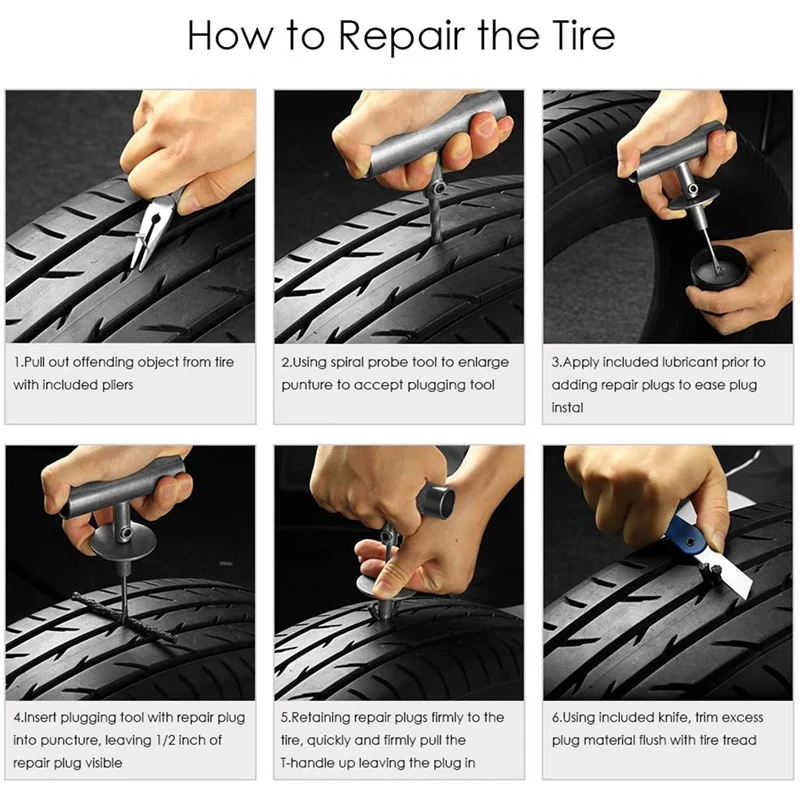 Balancing stands, which are also part of the site, allow you to eliminate wheel imbalance. nine0078
Balancing stands, which are also part of the site, allow you to eliminate wheel imbalance. nine0078
Equipment
The following types of technological equipment will be required to organize a full-fledged tire fitting and wheel balancing site:
In addition, to repair punctures and cuts in tires, you will need:
You can purchase all the necessary equipment for organizing a turnkey tire changer from our company.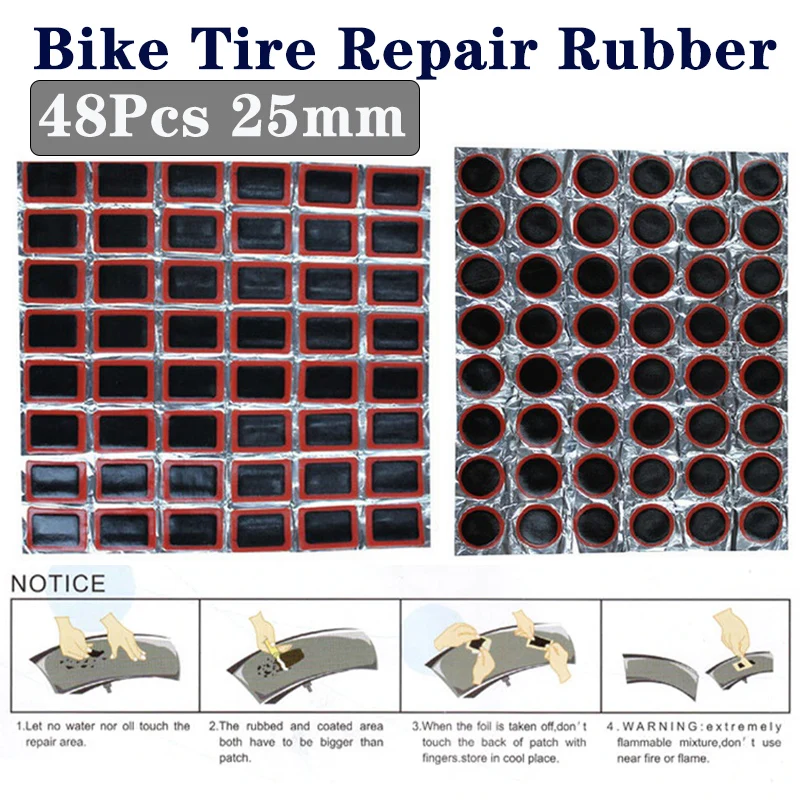
Technological process of section
The sequence of operations at the tire shop is as follows:
the car drives onto a tire changer with a low lift height or is hung out using rolling jacks.
Next, using a pneumatic wrench, the wheels are removed from the car and placed in a special wheel wash. nine0078 Then the wheels are disassembled on a tire changer, if necessary, punctures / cuts of tires are repaired by vulcanization, or new tires are installed (seasonal tire change).
Then the newly assembled wheels must be balanced on a balancing stand.
If the tire shop is equipped with a Hunter GSP9700 or Road Force Touch (RFT) vibration control stand with a load roller, then with their help it is possible to carry out not only ordinary balancing, but also in-depth wheel diagnostics aimed at determining and subsequent minimization of the power inhomogeneity of the wheel, as well as eliminating side slip of a set of wheels, as a result of which the owner returns the "move of a new car".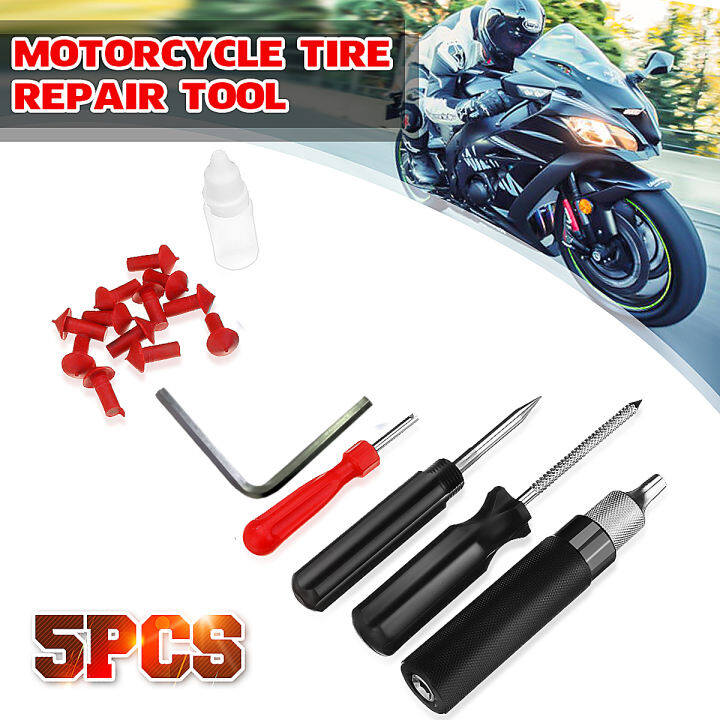 nine0078 After the wheels are assembled and balanced, they are installed back on the car and tightened with a certain force using a torque wrench.
nine0078 After the wheels are assembled and balanced, they are installed back on the car and tightened with a certain force using a torque wrench.
This is important so that the wheel bolts or nuts do not unwind during further operation, and at the same time not to overtighten the fasteners, which leads to deformation of the fastening thread and the impossibility of unscrewing the wheel in the future with a regular wheel wrench, especially in road conditions with a puncture .
Equinet turnkey project
Equinet offers ready-made solutions for designing a tire fitting site, as well as select all the necessary equipment and tools in accordance with your needs, wishes and budget.
We provide warranty support for all supplied equipment within the framework of manufacturers' warranties. Moreover, Equinet offers an extended warranty for up to 5 years, subject to the conclusion of a subscription service agreement. To implement warranty obligations, our company maintains a warehouse of spare parts for the equipment supplied.